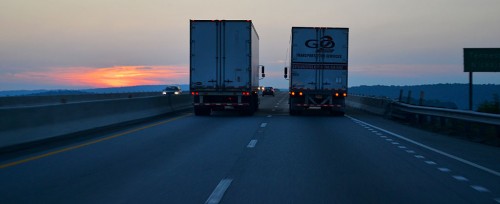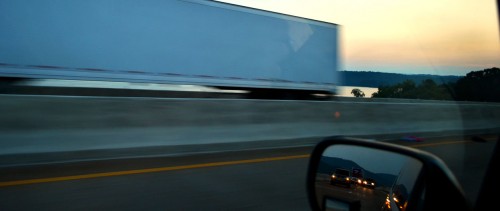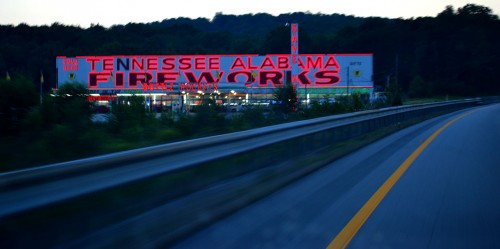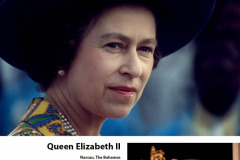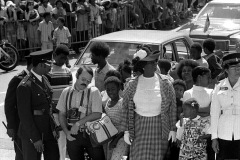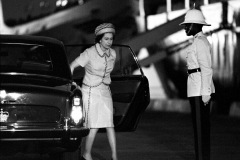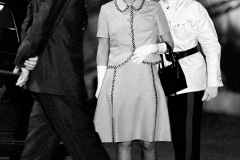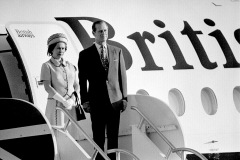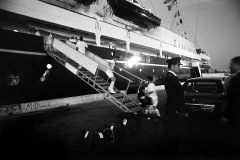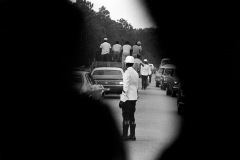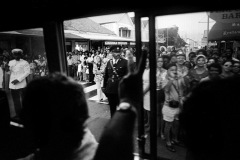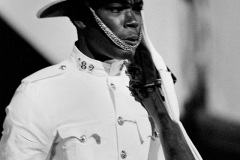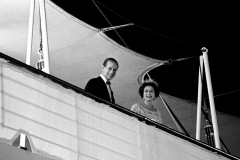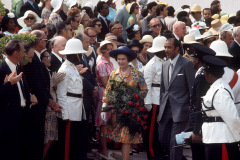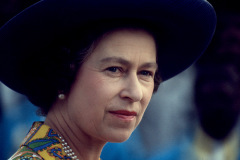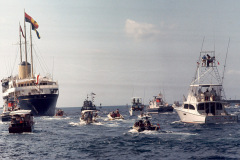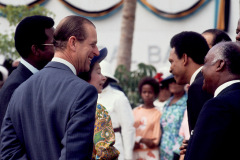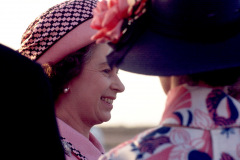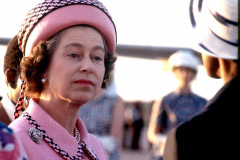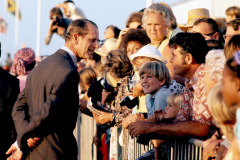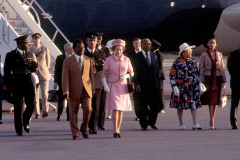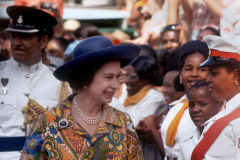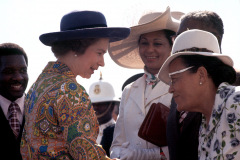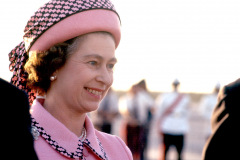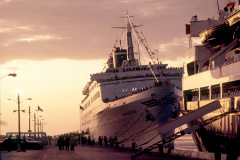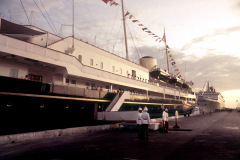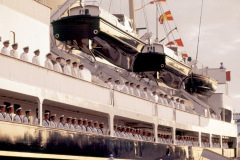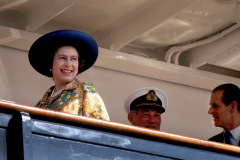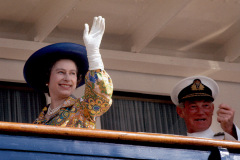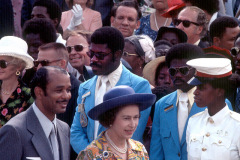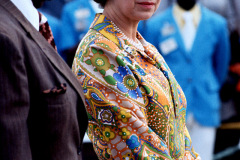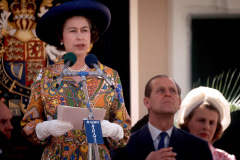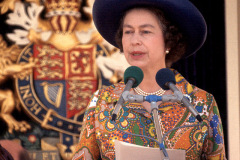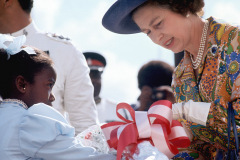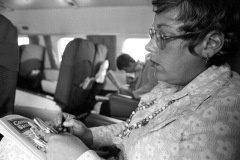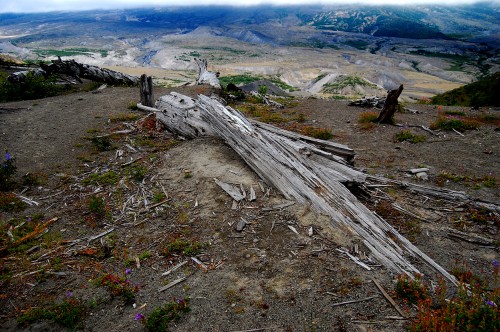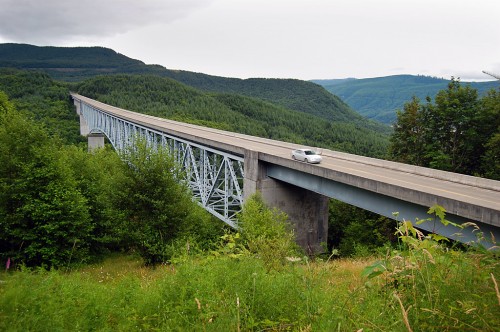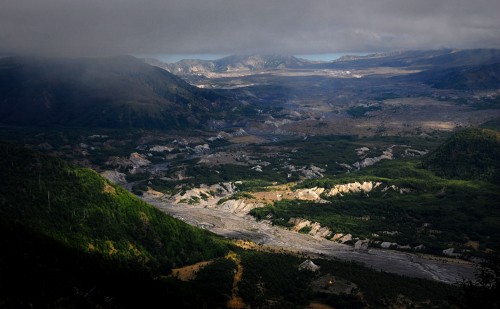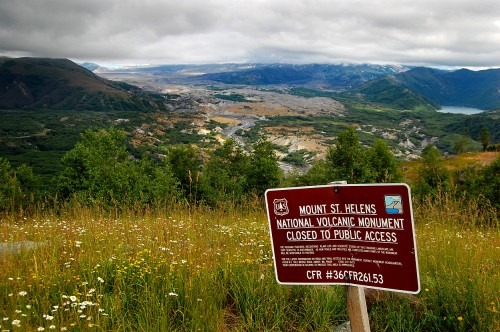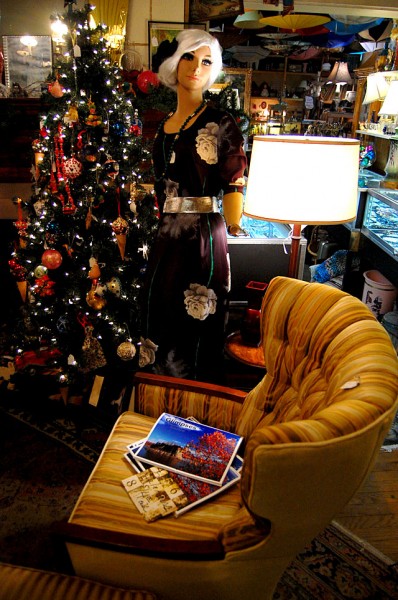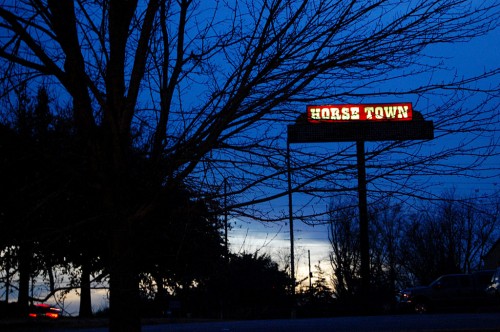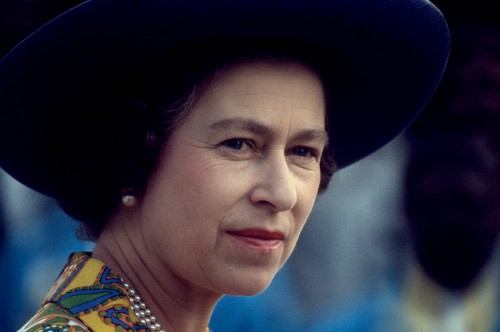 You’ll be hearing a lot about Queen Elizabeth II this week. On the death of her father in 1952, she became Head of the Commonwealth and queen regnant of seven independent Commonwealth countries: the United Kingdom, Canada, Australia, New Zealand, South Africa, Pakistan, and Ceylon. Her coronation service in 1953 was the first to be televised. Her Diamond Jubilee celebration starts June 2.
You’ll be hearing a lot about Queen Elizabeth II this week. On the death of her father in 1952, she became Head of the Commonwealth and queen regnant of seven independent Commonwealth countries: the United Kingdom, Canada, Australia, New Zealand, South Africa, Pakistan, and Ceylon. Her coronation service in 1953 was the first to be televised. Her Diamond Jubilee celebration starts June 2.
[I thought “regnant” was a typo until I looked it up. “A queen regnant is a female monarch who reigns in her own right, in contrast to a queen consort, who is the wife of a reigning king.”]
How I got to shoot the queen
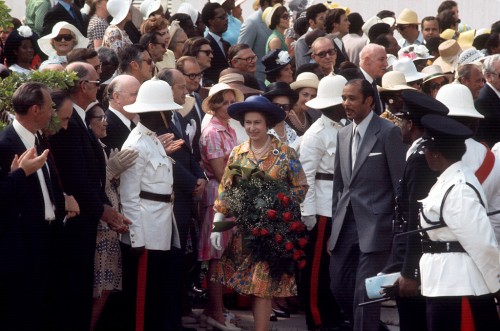 I was coming back from an assignment in Okeechobee, 60 miles away, when it sounded like someone was trying to call me on the company two-way radio. I knew there was an overpass ahead that would get me high enough to hit the office for about 45 seconds, so I checked in as I started to climb the bridge and told them to talk fast.
I was coming back from an assignment in Okeechobee, 60 miles away, when it sounded like someone was trying to call me on the company two-way radio. I knew there was an overpass ahead that would get me high enough to hit the office for about 45 seconds, so I checked in as I started to climb the bridge and told them to talk fast.
Between bursts of static, I thought I heard the boss ask “Do you have a suit?”
“Say again, ‘suit?'”
“Do you have a SUIT? We need somebody to cover the Queen and we think you may be the only guy on the staff with a suit.”
So, that’s how I got the assignment to go to the Bahamas in February of 1975 to cover Queen Elizabeth. It wasn’t because of my spot news prowess, my superior ability to shoot portraits or my ability to find unusual angles. It was because I was the only guy on the Palm Beach Post photo staff who owned a suit.
Is that normal?
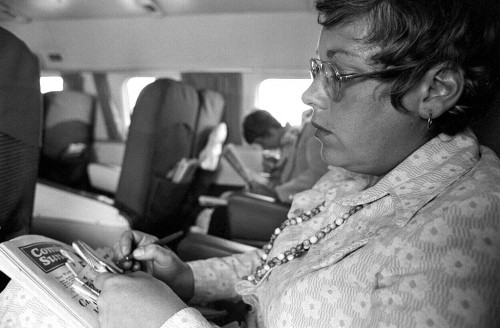 Reporter Sally Swartz and I had just settled into our seats in the small plane that was taking us to Nassau when I took a glance out the window. I gestured for a stewardess to come over and asked her, “Does that appear to you to be an extraordinary amount of hydraulic fluid flowing back over the wing?”
Reporter Sally Swartz and I had just settled into our seats in the small plane that was taking us to Nassau when I took a glance out the window. I gestured for a stewardess to come over and asked her, “Does that appear to you to be an extraordinary amount of hydraulic fluid flowing back over the wing?”
“No, sir,” she replied in a calm voice. “That’s perfectly normal.” I was comforted until she took off in a dead run for the cockpit. Soon, the first officer was peering out the window. He went back to the cockpit, I didn’t notice any parachutes in the air and we landed safely in Nassau, so it must have been normal for THAT plane.
On the wrong side of the wrong side
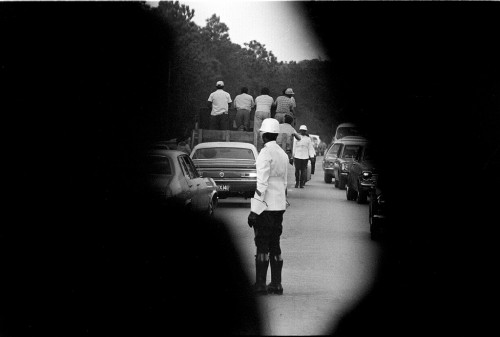 The plane ride was the least dangerous part of the trip. A whole bunch of us journalists were herded onto a beat-up vehicle that was a cross between a van and a small bus. It was driven by someone who alternated between homicidal and suicidal.
The plane ride was the least dangerous part of the trip. A whole bunch of us journalists were herded onto a beat-up vehicle that was a cross between a van and a small bus. It was driven by someone who alternated between homicidal and suicidal.
It’s bad enough that people in the Bahamas drive on the wrong side of the road. This guy liked to drive on the wrong side of the wrong side of the road. Traffic was horrific, so when he came upon a slowdown on the two-lane road, he’d lay on the horn and pull out to pass the whole world. Either he figured he had a bigger horn than the oncoming vehicles or he didn’t care if he died so long as he could take a busload of journalists with him.
Queen Elizabeth II and Prince Phillip
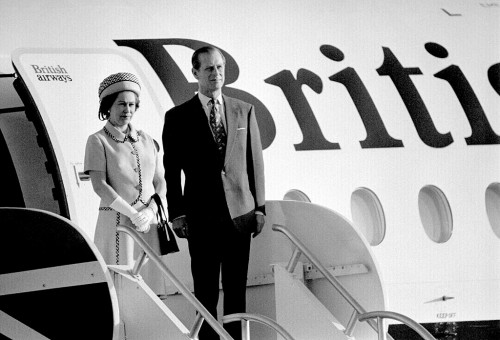
Sally and I checked in, got press credentials (more about that later) and a press packet with all kinds of Queenie goodies in it. If I root deep enough, I can probably find it, if anybody wants to put in a bid.
The good news I got at the press center was that photographers weren’t going to be allowed on the Royal Yacht; only reporters. That meant I didn’t need to wear my suit.
The Royal Couple arrived. I bet THEIR plane was better maintained than the one Sally and I flew over in.
Press herded and corralled
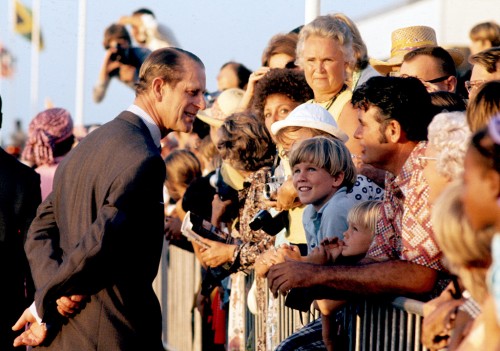 As soon as the Royal Couple got off the plane, anyone with a press credential was herded into a holding area where we would be controlled. I saw that the Royals were getting right up with folks, so I ditched my credentials and played tourist.
As soon as the Royal Couple got off the plane, anyone with a press credential was herded into a holding area where we would be controlled. I saw that the Royals were getting right up with folks, so I ditched my credentials and played tourist.
That worked for a short while. Then, two very tall, very big Bahamian policemen got on both sides of me, gently grabbed me under the armpits and half-carried / half-walked me back over to the press pen. They figured if they went to all of the trouble of issuing you a little piece of paper, you’d better wear it and you’d better go where they tell you to go.
Another photographer busted
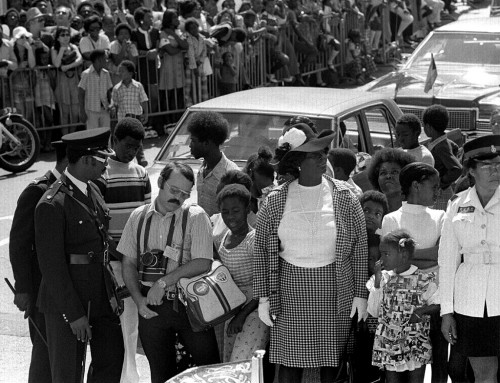 My compatriot from a Miami paper didn’t take his ID off, and they nailed him, too. I love his “who me?” expression. (My cops were bigger than his cops.)
My compatriot from a Miami paper didn’t take his ID off, and they nailed him, too. I love his “who me?” expression. (My cops were bigger than his cops.)
HMY Britannia
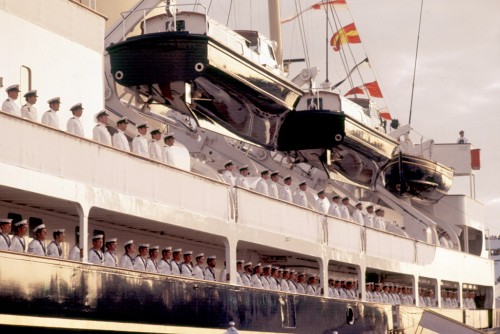 The Queen and her husband flew in, but left on the HMY Britannia, with lifeboats as big as some yachts. I bet it’s safe to say the rule is “Queens and Princes first, THEN women and children.”
The Queen and her husband flew in, but left on the HMY Britannia, with lifeboats as big as some yachts. I bet it’s safe to say the rule is “Queens and Princes first, THEN women and children.”
Journalist Andrew Marr wrote in his book The Real Elizabeth that the British government planned for the Royal Yacht to serve as the Queen’s refuge in the event of a nuclear war.
The Queen does not sweat
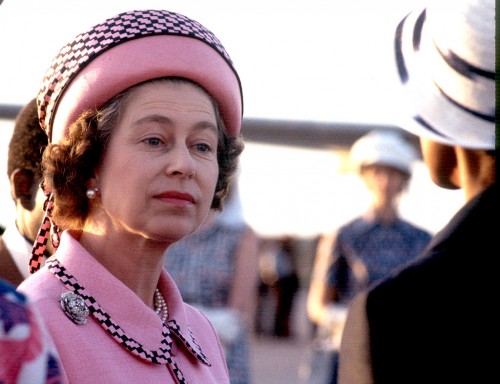 She doesn’t even glow. I was soaked to the skin and I saw sweat running down faces in the crowd, but Queen Elizabeth II must have had all her sweat glands removed as a child. I watched her through a telephoto lens for an hour hoping to see a bead of sweat or a hint of moisture. Zip, nada, none. I don’t know how she did it.
She doesn’t even glow. I was soaked to the skin and I saw sweat running down faces in the crowd, but Queen Elizabeth II must have had all her sweat glands removed as a child. I watched her through a telephoto lens for an hour hoping to see a bead of sweat or a hint of moisture. Zip, nada, none. I don’t know how she did it.
Photo gallery of Queen’s 1975 visit to the Bahamas
Here’s a selection of photos from the Queen’s visit to the Bahamas. Time has caused some color shifts, but they still look pretty good. Click on any photo to make it larger, then click on the left or right side of the image to move through the gallery.

